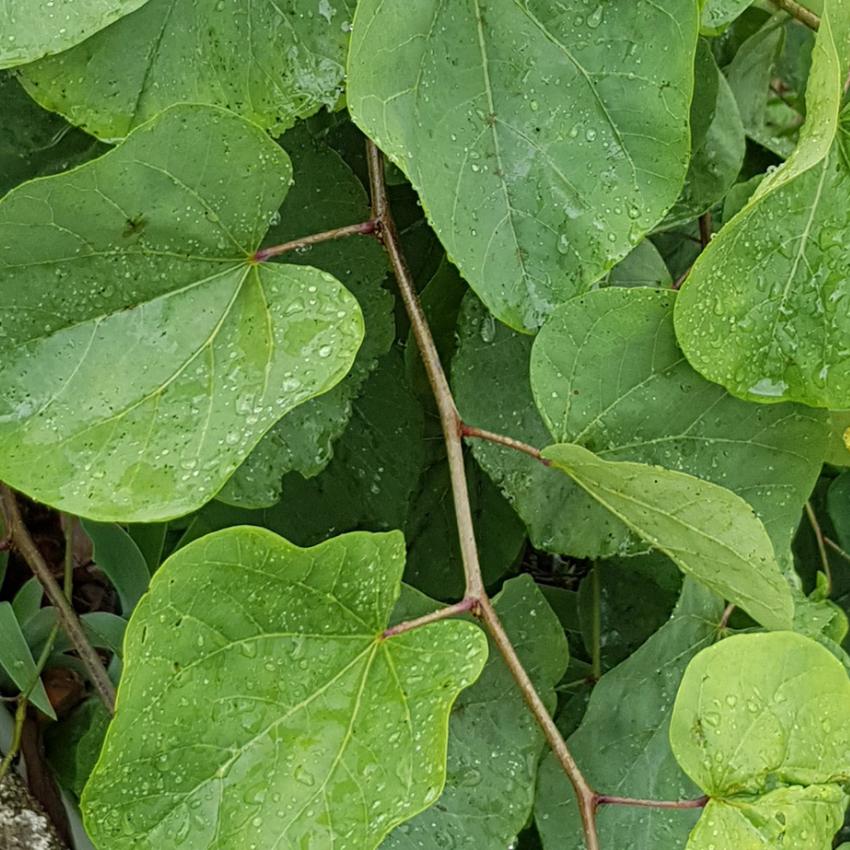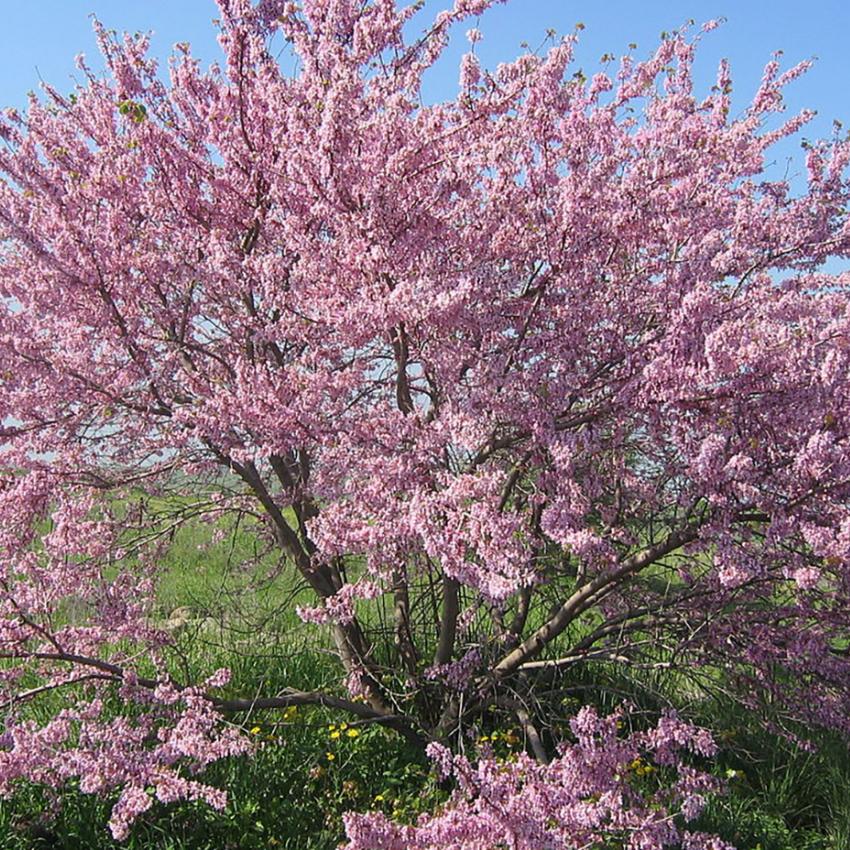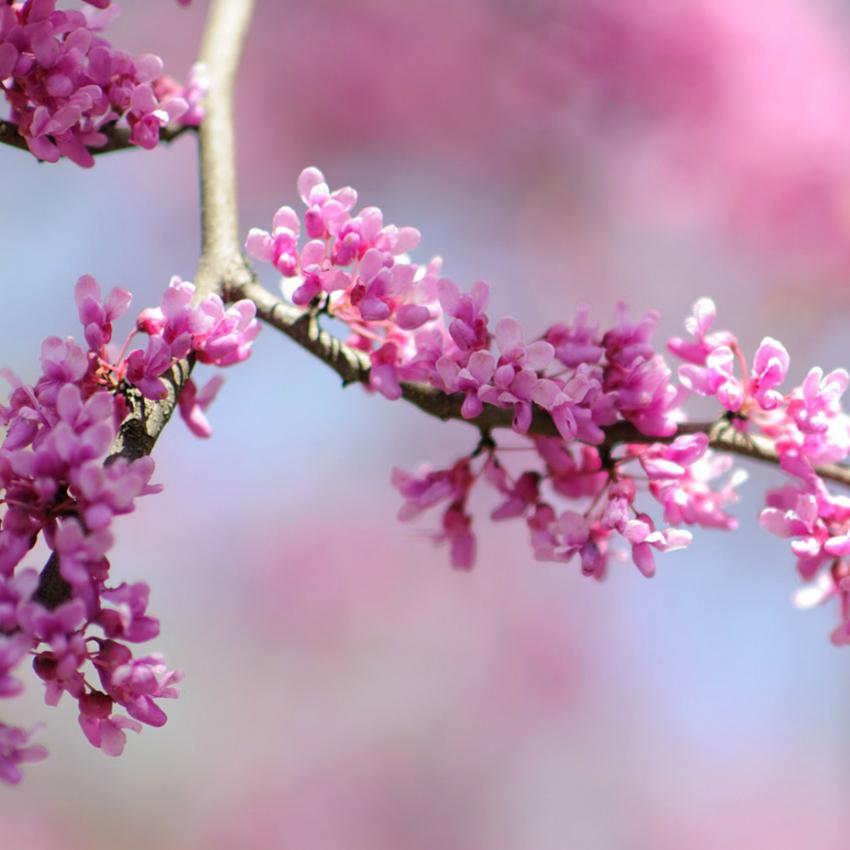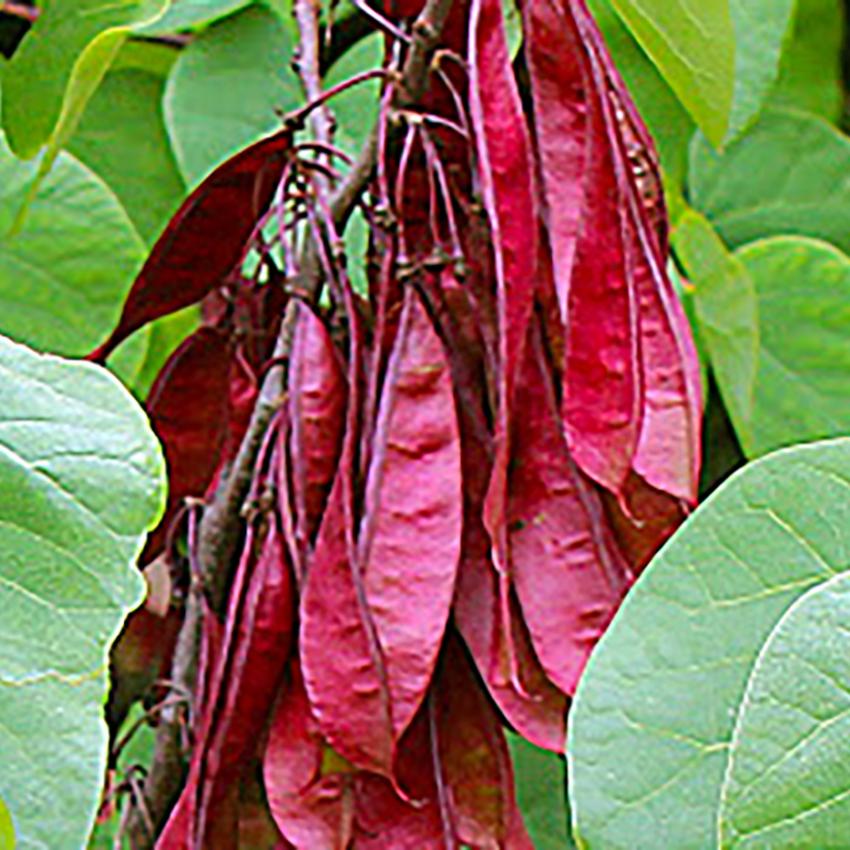



Judas Tree
Cercis siliquastrum
Cercis siliquastrum, commonly known as the Judas tree or Judas-tree, is a small deciduous tree from Southern Europe and Western Asia which is noted for its prolific display of deep pink flowers in spring. The flowers display a blossom with five free petals and fused sepals. This flower shape is typical of the pea family (Fabaceae). The leaves appear shortly after the first flowers emerge. These are cordate with a blunt apex, which occasionally has a shallow notch at the tip. The tree produces long flat pods that hang vertically. The flowers are edible and purportedly have a sweet-acid taste.
There is a myth that Judas Iscariot hanged himself from a tree of this species, causing its white flowers to turn red. This belief is related to the common name "Judas tree", which is possibly a corrupted derivation from the French common name, Arbre de Judée, meaning tree of Judea, referring to the hilly regions of that country where the tree used to be common. Another possible source for the vernacular name is the fact that the flowers and seedpods can dangle direct from the trunk in a way reminiscent of Judas's possible method of suicide.
A sermon illustration on the deadly effects of succumbing to temptation refers to a false idea that the Judas tree killed bees drawn to it: "Dr. Cuyler forcibly illustrates this by reference to the Judas tree. The blossoms appear before the leaves, and they are of a brilliant crimson. The flaming beauty of the flowers attracts innumerable insects; and the wandering bee is drawn after it to gather honey. But every bee which alights upon the blossom, imbibes a fatal opiate, and drops dead from among the crimson flowers to the earth."
